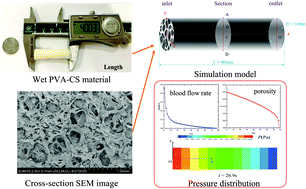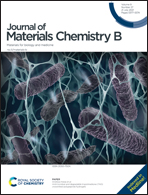Blood-clotting model and simulation analysis of polyvinyl alcohol–chitosan composite hemostatic materials
Abstract
The blood-clotting performance and characteristics of hemostatic materials are critical for their development and actual application. Based on the theory of porous media and characteristics of a non-Newtonian fluid, this study proposed an adsorption factor to characterize the porosity generation and blood coagulation process of hemostatic materials. On this basis, we constructed a physical model of blood coagulation in a porous medium integrated with the power-law fluid model to study the proposed poly(vinyl alcohol)–chitosan (PVA–CS) composite hemostatic material. Moreover, we simulated the dynamic blood flow process and blood coagulation process in the PVA–CS hemostatic material by introducing the physical model. The simulation results show that the blood begins to coagulate, which affects the porosity and permeability of the blood-containing area, resulting in changing the porosity after blood flowed into the hemostatic material. The porosity, permeability, and blood flow rate will approach zero until the generated blood coagulation entirely blocked the porous medium. Besides, simulation can provide the pressure and velocity distribution varying in the coagulation process of hemostatic materials. The temperature will also influence the hemostatic performance of the PVA–CS material. In all, the proposed simulation method enabled the coagulation mechanism of PVA–CS to be revealed from the perspective of blood flow in porous media combined with the adsorption factor.



 Please wait while we load your content...
Please wait while we load your content...